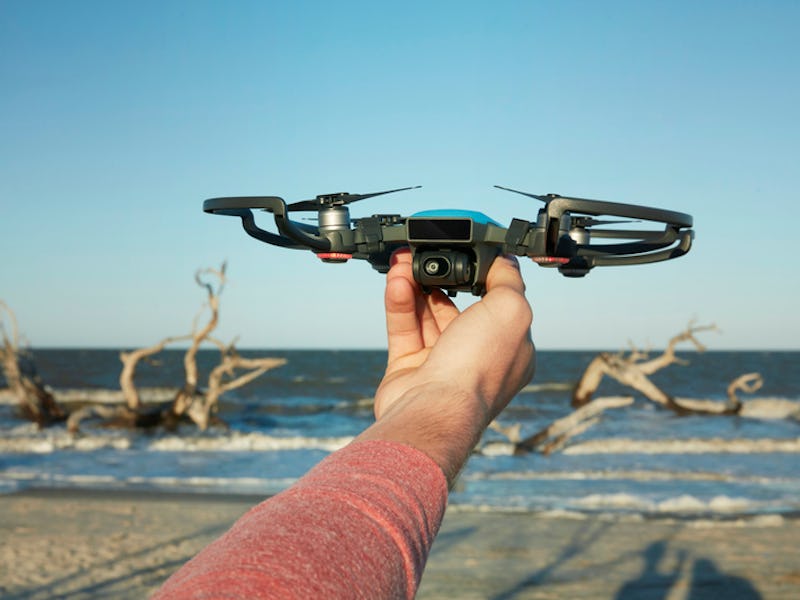10 Questions About the DJI Spark After Its Big Reveal
If you're going to spend $500, you may as well know how it works.

The next time you’re trying to get that selfie doing the LeBron James chalk toss pose — a thing that people definitely do — the hand-controlled DJI Spark drone has you covered. On Wednesday, DJI debuted the tiny, colorful Spark, which will be controlled entirely with hand gestures, and everything packed into its tiny body makes it an impressive piece of tech.
While some companies have been working on gesture controlled drones, DJI’s Spark doesn’t require any extra equipment or user hacks to get its features. And for a drone this small, packing in the tech to get this kind of control is remarkable, particularly for the $500 price tag. But before you drop that kind of money on a drone, Inverse has 10 big questions for DJI about how the tech works, starting with the gesture recognition technology that identifies you as the pilot. Based on what other companies have released and the features of the Spark, we have some guesses as to how the gesture recognition works.
How does the Spark recognize a pilot?
Probably the Spark is using some sort of facial recognition or other gesture recognition machine learning system that analyzes what its video feed to identify you as its pilot, based on how other companies have developed gesture recognition drones.
How does the Spark figure out what your palm is?
Other companies, like Vergence Labs that was acquired by Snap in 2014 have worked on gesture controlled drones. The general concept used by Vergence Labs is simple, and likely to be similar to what DJI uses in the Spark. Using a camera as computer vision, you can run a machine learning program on the live footage to identify people and body parts as different from the surroundings.
How does the drone recognize gestures?
Based on the work Vergence Labs did before it was acquired by Snap, after an algorithm determined what body parts it should pay attention to, a secondary gesture recognition program analyzes the movement it sees. These become commands that the drone then follows.
Why the flat palm for most of the gestures?
For gesture recognition, simpler, larger gestures are easier for the camera to understand, particularly if the Spark is using motion sensors to supplement its gesture recognition, which is something a research team at the Birla Institute of Technology and Science in India used in 2016 for gesture controlled drones.
Will you be able to use gestures to get other shots?
Probably not — since the camera and the sensors both face the front, it’s likely that the Spark wouldn’t be able to see you otherwise.
Some of the questions about the Spark’s tech aren’t so easy to answer. Anybody looking to drop $500 on a DJI Spark may also wonder….
What happens if you’re in a costume, or a coat, or gloves?
What happens if you don’t have two hands free— can you use a different gesture to take a photo?
Can someone else take control of it by sticking up their palm?
Can you use something else to perform the gestures?
Why the three feet and ten feet pre-set gesture distances?
We’ve contacted DJI and will update when we hear back.
Either way, when Vergence Labs worked on this tech in 2014, the computer analysis had to be connected to the drone using a USB cable, and other options on the market require downloading non-company DIY computer codes or special gloves or armbands. DJI’s packing of the computer recognition tech onto the Spark advances the tech into something that a consumer can easily use.
Along with the gestures, the Spark comes with a number of preset flight patterns and can use your phone as a flight controller. It’s available for pre-order now and will start shipping on June 15th, if you want to test and see if its recognition system will work if you’re wearing a mask or costume gloves over your palms. It’s a lot of tech in a small package to make the small drone extremely easy to use, and still priced to be affordable for the features included.